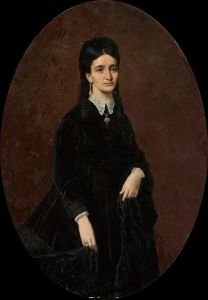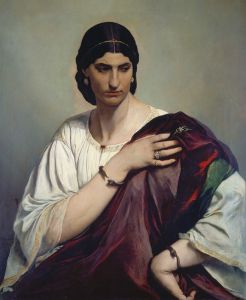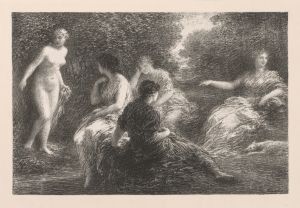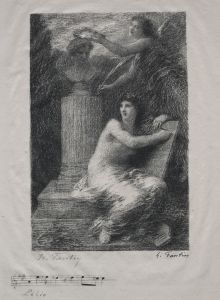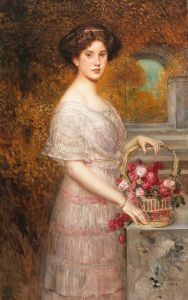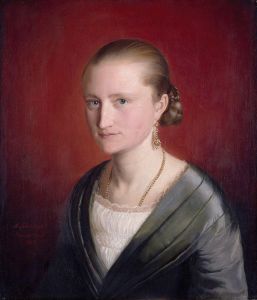
Duchess de Fitz-James
A hand-painted replica of Henri Fantin-Latour’s masterpiece Duchess de Fitz-James, meticulously crafted by professional artists to capture the true essence of the original. Each piece is created with museum-quality canvas and rare mineral pigments, carefully painted by experienced artists with delicate brushstrokes and rich, layered colors to perfectly recreate the texture of the original artwork. Unlike machine-printed reproductions, this hand-painted version brings the painting to life, infused with the artist’s emotions and skill in every stroke. Whether for personal collection or home decoration, it instantly elevates the artistic atmosphere of any space.
Henri Fantin-Latour was a renowned French painter known for his exquisite still lifes and portraits. Among his notable works is the painting titled "Duchess de Fitz-James." This artwork exemplifies Fantin-Latour's skill in portraiture, capturing the elegance and poise of his subjects with meticulous attention to detail.
Henri Fantin-Latour was born on January 14, 1836, in Grenoble, France, and he developed a passion for art at an early age. He studied at the École des Beaux-Arts in Paris and was influenced by the works of the Old Masters, which is evident in his classical approach to painting. Although he is best known for his still lifes of flowers, Fantin-Latour also gained recognition for his portraits, which often depicted members of the French aristocracy and intellectual elite.
"Duchess de Fitz-James" is one such portrait that showcases Fantin-Latour's ability to convey the character and status of his subjects. The painting is executed with a refined palette and a keen eye for detail, highlighting the duchess's dignified presence. The composition is balanced and harmonious, with a focus on the sitter's expression and attire, reflecting the fashion and social norms of the period.
The identity of the Duchess de Fitz-James, as depicted in the painting, is tied to the historical Fitz-James family, a noble lineage with roots in both France and England. The Fitz-James family held significant influence and were known for their contributions to political and social life in France. Portraits such as this one were often commissioned to commemorate the status and achievements of individuals within such prominent families.
Fantin-Latour's work is characterized by its realism and subtlety, avoiding the dramatic flair that was common in some of his contemporaries' works. Instead, he focused on capturing the essence of his subjects through careful observation and a delicate touch. This approach is evident in "Duchess de Fitz-James," where the artist's attention to the textures of fabric and the nuances of light and shadow bring the portrait to life.
Throughout his career, Fantin-Latour maintained a close association with other artists and intellectuals of his time, including Édouard Manet, James McNeill Whistler, and the composer Hector Berlioz. His connections within these circles often provided him with opportunities to paint influential figures, further establishing his reputation as a portrait artist.
Henri Fantin-Latour passed away on August 25, 1904, in Buré, France, leaving behind a legacy of works that continue to be celebrated for their beauty and technical mastery. "Duchess de Fitz-James" remains an exemplary piece within his oeuvre, reflecting both the artist's skill and the cultural milieu of 19th-century France. Today, Fantin-Latour's paintings are held in high regard and can be found in major museums and private collections around the world, where they continue to be appreciated by art enthusiasts and scholars alike.





